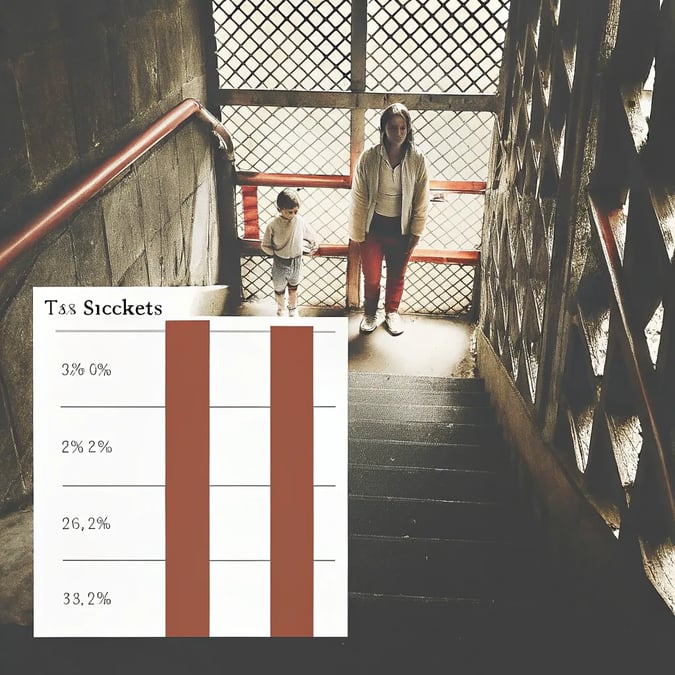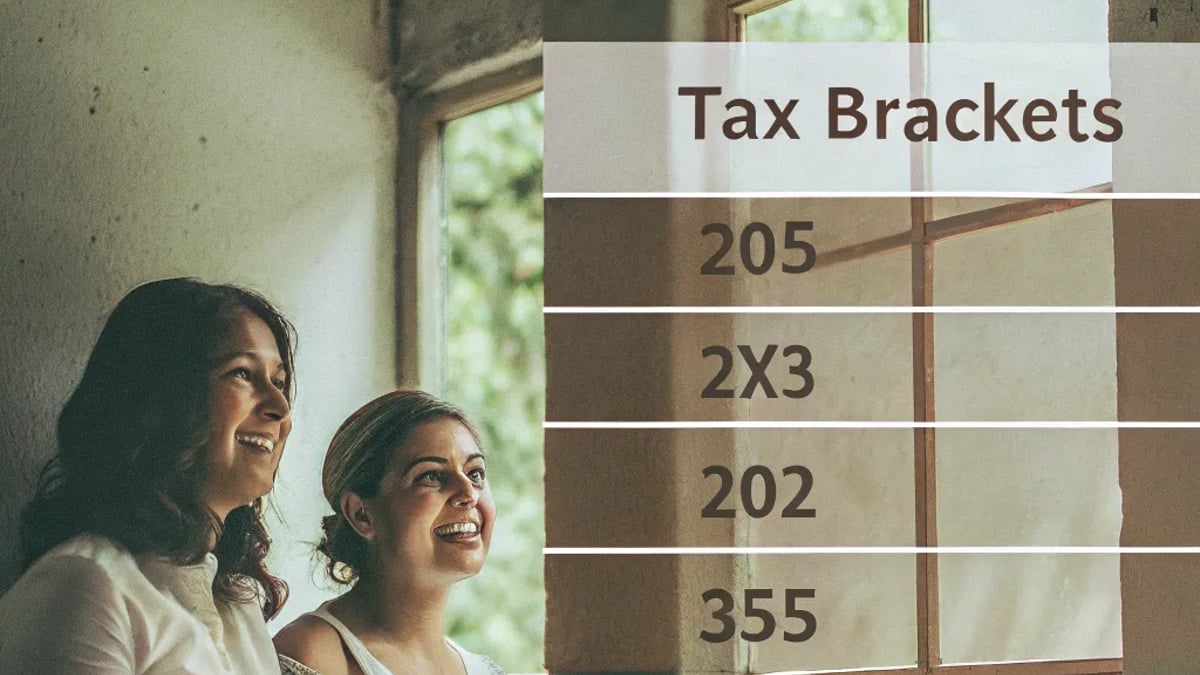
Tax season approaches faster than most of us would like to admit. With 2025's updated tax brackets now available, it's the perfect time to demystify how our tax system actually works. Many Americans misunderstand tax brackets, believing that moving into a higher bracket means all their income gets taxed at that higher rate—a common misconception that needs clearing up.
How Tax Brackets Actually Work in the U.S.
The U.S. uses a progressive tax system, which means different portions of your income are taxed at different rates. This system is designed to place a higher tax burden on those with higher incomes while keeping taxes lower for those earning less.
Let's break down how this actually works in practice.
The Progressive Taxation System Explained

When people say, "I don't want a raise because it'll push me into a higher tax bracket," they're misunderstanding a fundamental aspect of our tax system. Only the income that falls within a specific bracket gets taxed at that bracket's rate—not your entire income.
Here's a simplified example:
Imagine the first $10,000 you earn is taxed at 10%. If you earn $10,000, you pay $1,000 in taxes. Now, let's say income between $10,001 and $40,000 is taxed at 12%. If you earn $40,000, you're not paying 12% on the entire amount. Instead:
- The first $10,000 is still taxed at 10% ($1,000)
- The next $30,000 is taxed at 12% ($3,600)
- Your total tax would be $4,600, not $4,800 (which would be 12% of $40,000)
This misunderstanding leads many people to make poor financial decisions based on tax bracket fears.
2025 Federal Income Tax Brackets
The IRS adjusts tax brackets annually to account for inflation. Here are the projected federal income tax brackets for 2025:

Single Filers
| Tax Rate | Taxable Income Range |
|---|---|
| 10% | $0 to $11,600 |
| 12% | $11,601 to $47,150 |
| 22% | $47,151 to $100,525 |
| 24% | $100,526 to $191,950 |
| 32% | $191,951 to $243,725 |
| 35% | $243,726 to $609,350 |
| 37% | $609,351 or more |
Married Filing Jointly
| Tax Rate | Taxable Income Range |
|---|---|
| 10% | $0 to $23,200 |
| 12% | $23,201 to $94,300 |
| 22% | $94,301 to $201,050 |
| 24% | $201,051 to $383,900 |
| 32% | $383,901 to $487,450 |
| 35% | $487,451 to $731,200 |
| 37% | $731,201 or more |
Note: These are projected figures based on inflation adjustments and may be subject to minor changes when officially released by the IRS.
What's Your Effective Tax Rate?

Your effective tax rate is what you actually pay in taxes as a percentage of your total income—and it's always lower than your highest tax bracket rate.
Let's look at an example for 2025:
Sarah is single and has a taxable income of $80,000 in 2025. Based on the projected brackets:
- First $11,600 taxed at 10% = $1,160
- Next $35,550 ($47,150 - $11,600) taxed at 12% = $4,266
- Remaining $32,850 ($80,000 - $47,150) taxed at 22% = $7,227
Sarah's total federal income tax would be approximately $12,653, making her effective tax rate about 15.8% ($12,653 ÷ $80,000), significantly lower than her 22% marginal tax bracket.
Changes from 2024 to 2025
The tax brackets for 2025 have been adjusted upward by approximately 3.1% from 2024 levels to account for inflation. This adjustment helps prevent "bracket creep," where taxpayers are pushed into higher tax brackets simply because of inflation rather than actual increases in real income.
For example, the top of the 24% bracket for single filers increased from about $186,000 in 2024 to $191,950 in 2025. This means if your income increased by less than 3.1%, you might actually fall into a lower bracket relative to where you were in 2024.
Should You Worry About Moving Into a Higher Bracket?
Many people worry unnecessarily about crossing into higher tax brackets. Remember:
- Only the income above the threshold gets taxed at the higher rate
- Moving into a higher bracket never results in taking home less total money
- Your effective tax rate increases gradually, not suddenly
"I've had clients turn down raises because they thought they'd lose money by moving to a higher bracket," says Janet Smith, a CPA with 15 years of tax planning experience. "That's never how it works, but this misconception is incredibly common."
What About Deductions and Credits in 2025?
Understanding tax brackets is only part of the equation. Your actual tax liability depends on:
Standard Deduction for 2025
- Single filers: $14,600 (projected)
- Married filing jointly: $29,200 (projected)
These deductions reduce your taxable income before tax rates are applied. If you're single with a gross income of $60,000, your taxable income after the standard deduction would be approximately $45,400.
Tax Credits vs. Deductions
Tax credits are particularly valuable as they reduce your tax bill dollar-for-dollar, rather than just reducing taxable income. Major credits to be aware of for 2025 include:
- Child Tax Credit: Up to $2,000 per qualifying child
- Earned Income Tax Credit: Up to $7,430 for low to moderate-income workers
- American Opportunity Credit: Up to $2,500 for qualified education expenses
"Credits are the real hidden gems of tax planning," explains tax strategist Michael Rodriguez. "While people obsess over tax brackets, they often overlook credits that could save them thousands."
How Can You Optimize Your Tax Situation for 2025?
Retirement Contributions
Contributing to tax-advantaged retirement accounts like 401(k)s and traditional IRAs can lower your taxable income. For 2025, contribution limits are expected to be:
- 401(k): $23,500 (plus $7,500 catch-up for those 50+)
- IRA: $7,000 (plus $1,000 catch-up for those 50+)
Health Savings Accounts
If you have a high-deductible health plan, HSA contributions are tax-deductible and grow tax-free. Projected 2025 contribution limits:
- Individual coverage: $4,150
- Family coverage: $8,300
- Additional $1,000 catch-up contribution for those 55+
Timing Income and Deductions
Consider bunching deductions in certain years if you're close to the threshold for itemizing versus taking the standard deduction. This strategy works particularly well with medical expenses or charitable contributions.
What About State Income Taxes?
While we've focused on federal income taxes, don't forget that most states have their own income tax systems. States like California, New York, and New Jersey have relatively high state income taxes with their own brackets, while states like Florida, Texas, and Nevada have no state income tax at all.
Your location significantly impacts your overall tax burden. According to data from the Tax Foundation, the combined state and local tax burden varies from 5.1% to 15.9% depending on where you live.
Common Tax Bracket Questions
Will my tax rate change dramatically in 2025?
For most taxpayers, no. The inflation adjustments to tax brackets mean that if your income increases at roughly the same rate as inflation, you should remain in approximately the same tax situation. However, significant income changes or major life events (marriage, retirement, etc.) could move you between brackets.
How do capital gains fit into tax brackets?
Capital gains are taxed differently from ordinary income. Long-term capital gains (from assets held longer than a year) are taxed at 0%, 15%, or 20% depending on your income. These rates are generally lower than ordinary income tax rates for the same income levels.
What happens if the Tax Cuts and Jobs Act expires?
The Tax Cuts and Jobs Act of 2017 is scheduled to expire after 2025, which could significantly change tax brackets for 2026. If Congress doesn't act, we could revert to pre-2018 tax brackets, which had different rates and income thresholds.
The Bottom Line
Understanding how tax brackets truly work helps you make better financial decisions and avoid misconceptions that might lead you astray. Your marginal tax rate (highest bracket) is different from your effective tax rate (what you actually pay overall), and moving into a higher bracket only affects the portion of income that exceeds the previous bracket's threshold.
As we approach 2025, consider consulting with a tax professional to optimize your specific situation, especially if you're near a bracket threshold or experiencing major life changes.
Disclaimer: This article is for informational purposes only and should not be construed as tax or financial advice. Tax laws are complex and subject to change. Please consult with a qualified tax professional regarding your specific circumstances.
Tags

About Elliot W. Ramsey the Author
Elliot W. Ramsey is a financial-literacy expert with over 15 years of experience empowering individuals to cultivate healthy financial habits and manage personal budgets. He is renowned for his ability to simplify complex financial concepts, making them accessible to audiences of all ages.
Recommended Articles
These States Are Cutting Property Taxes for Seniors in 2025
Discover which states are cutting property taxes for seniors in 2025, providing essential financial relief for those on fixed incomes.
These States Are Cutting Property Taxes for Seniors in 2025
Discover which states are cutting property taxes for seniors in 2025, helping them manage financial stability with important relief programs.
Are You Eligible for the New 2025 Tax Credits?
The 2025 tax year introduces several expanded and new tax credits, such as a 30% Residential Clean Energy Credit for solar, wind, and geothermal systems with no upper limit, a potentially enhanced Child Tax Credit, and stricter eligibility for electric vehicle credits requiring North American assembly. Additional opportunities include the Energy Efficient Home Improvement Credit with specific caps per item, and the Work Opportunity Tax Credit for diverse workforce hiring, each with specific requirements and income-based phase-outs, underscoring the need for early preparation and potential consultation with tax professionals.
Freelancer Tax Tips: Deductions You Might Be Missing
Freelancers often overlook key tax deductions that can reduce their 15.3% self-employment tax burden, such as the home office deduction, self-employed health insurance, and retirement plan contributions. It's crucial to keep accurate records and consult with a tax professional to ensure compliance while benefiting from deductions on business travel, professional development, and other legitimate business expenses.
How to Legally Reduce Your Tax Bill in 2025
To legally reduce your tax bill in 2025, consider strategies such as maximizing retirement account contributions, using health savings accounts, strategically itemizing deductions versus taking the standard deduction, leveraging business expense deductions for the self-employed, employing tax-loss harvesting for investments, and taking advantage of real estate tax benefits. Be proactive in your tax planning, particularly in light of impending changes to the Tax Cuts and Jobs Act set to expire after 2025, and consult with a tax professional for personalized advice.




